| Council area or areas | Existing constituency or constituencies | Map of existing | Proposed constituency or constituencies | Map of proposed |
|---|
Aberdeen City ,
Aberdeenshire , Angus , and Moray | Aberdeen Central (part of Aberdeen City council area),
Aberdeen South (part of Aberdeen City council area),
Aberdeen North (part of Aberdeen City council area),
Banff and Buchan (part of Aberdeenshire council area),
Gordon (part of Aberdeenshire and part of Moray council areas),
Moray (part of Moray council area),
West Aberdeenshire and Kincardine (part of Aberdeenshire council area),
part of Angus (part of Angus council area), and
part of North Tayside (part of Angus council area) |  | Aberdeen Central (part of Aberdeen City council area),
Aberdeen Donside (part of Aberdeen City council area),
Aberdeen South and North Kincardine (part of Aberdeen City and part of Aberdeenshire council area),
Aberdeenshire East (part of Aberdeenshire council area),
Aberdeenshire West (part of Aberdeenshire council area),
Angus North and Mearns (part of Aberdeenshire and Angus council areas),
Angus South (part of Angus council area),
Banffshire and Buchan Coast (part of Aberdeenshire council area and part of Moray council area), and
Moray (part of Moray council area) |  |
Argyll and Bute ,
East Dunbartonshire , and West Dunbartonshire | Argyll and Bute (part of Argyll and Bute council area),
Dumbarton (part of Argyll and Bute and part of West Dunbartonshire council areas),
Clydebank and Milngavie (part of West Dunbartonshire council area), and
Strathkelvin and Bearsden (part of East Dumbartonshire council area) |  | Argyll and Bute (part of Argyll and Bute council area),
Dumbarton (part of Argyll and Bute and West Dunbartonshire council areas),
Clydebank and Milngavie (part of East Dumbartonshire and part of West Dunbartonshire council areas), and
Strathkelvin and Bearsden (part of East Dumbartonshire council area) |  |
Clackmannanshire ,
and Stirling | Stirling (part of Stirling council area), and
part of Ochil (Clackmannanshire and part of Stirling council areas) | 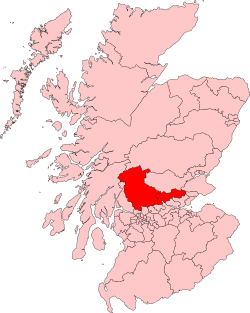 | Clackmannanshire and Dunblane (Clackmannanshire council area and part of Stirling council area), and
Stirling (part of Stirling council area) |  |
| Dumfries and Galloway | Dumfries, and
Galloway and Upper Nithsdale |  | Dumfriesshire , and
Galloway and West Dumfries |  |
| Dundee City | Dundee East,
Dundee West, and
parts of Angus | 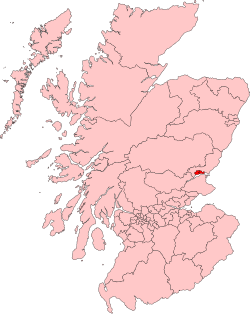 | Dundee City East , and
Dundee City West | 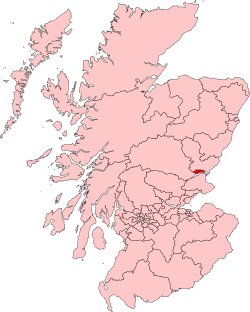 |
East Ayrshire ,
and South Ayrshire , | Ayr (part of South Ayrshire council area),
Carrick, Cumnock and Doon Valley (part of East Ayrshire and part of South Ayrshire council areas),
Kilmarnock and Loudoun (parts of East Ayrshire council area),
|  | Ayr (part of South Ayrshire council area),
Carrick, Cumnock and Doon Valley (part of South Ayrshire and East Ayrshire council areas),
Kilmarnock and Irvine Valley (part of East Ayrshire council area),
|  |
East Lothian ,
Midlothian , and Scottish Borders | East Lothian (part of East Lothian council area),
Midlothian (part of Midlothian council area),
Roxburgh and Berwickshire (part of Scottish Borders council area),
Tweeddale, Ettrick and Lauderdale (part of Scottish Borders and part of Midlothian council areas), and
part of Edinburgh East and Musselburgh (part of East Lothian council area) |  | East Lothian (part of East Lothian council area),
Ettrick, Roxburgh and Berwickshire (part of East Lothian and part of Midlothian council areas),
Midlothian North and Musselburgh (part of Scottish Borders council area), and
Midlothian South, Tweedale and Lauderdale (part of Midlothian and part of Scottish Borders council areas) |  | | |
East Renfrewshire ,
Inverclyde , and Renfrewshire | Eastwood (East Renfrewshire council area)
Greenock and Inverclyde
Paisley North
Paisley South
West Renfrewshire
| 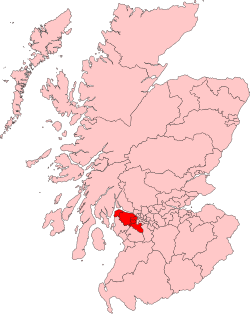 | Eastwood (parts of East Renfrewshire council area)
Greenock and Inverclyde (part of Inverclyde council area)
Paisley (part of Renfrewshire council area)
Renfrewshire North and West (parts of Inverclyde council area and parts of Renfrewshire council area)
Renfrewshire South (parts of East Renfrewshire council area and Renfrewshire council area) |  |
| Edinburgh, City of | Edinburgh Central,
Edinburgh North and Leith,
Edinburgh South,
Edinburgh Pentlands,
Edinburgh West, and
part of Edinburgh East and Musselburgh |  | Edinburgh Central ,
Edinburgh Eastern ,
Edinburgh Northern and Leith ,
Edinburgh Pentlands ,
Edinburgh Southern ,
Edinburgh Western |  |
| Falkirk | Falkirk East, and
Falkirk West | 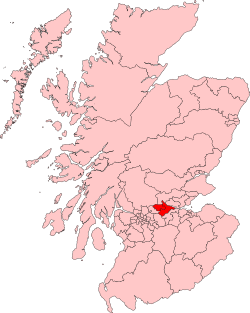 | Falkirk East , and
Falkirk West |  |
| Fife | Central Fife,
Dunfermline East,
Dunfermline West,
Fife North East, and
Kirkcaldy |  | Cowdenbeath ,
Dunfermline ,
Kirkcaldy ,
Mid Fife and Glenrothes , and
North East Fife |  |
| Glasgow City | Glasgow Anniesland,
Glasgow Baillieston,
Glasgow Cathcart,
Glasgow Govan,
Glasgow Kelvin,
Glasgow Maryhill,
Glasgow Pollok,
Glasgow Shettleston,
Glasgow Springburn, and
part of Glasgow Rutherglen |  | Glasgow Anniesland ,
Glasgow Cathcart ,
Glasgow Kelvin ,
Glasgow Maryhill and Springburn ,
Glasgow Pollok ,
Glasgow Provan ,
Glasgow Shettleston , and
Glasgow Southside |  |
| Highland | Caithness, Sutherland and Easter Ross,
Inverness East, Nairn and Lochaber, and
Ross, Skye and Inverness West |  | Caithness, Sutherland and Ross ,
Inverness and Nairn , and
Skye, Lochaber and Badenoch |  |
| Na h-Eileanan Siar | Western Isles |  | Na h-Eileanan an Iar |  |
| Perth and Kinross | Perth,
part of Angus,
part of North Tayside, and
part of Ochil |  | Perthshire North , and
Perthshire South and Kinross-shire |  |
| North Ayrshire | Cunninghame North, and
Cunninghame South |  | Cunninghame North , and
Cunninghame South | 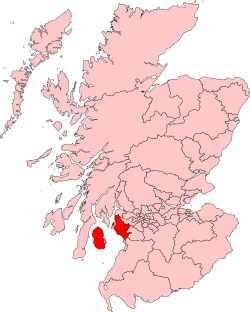 |
North Lanarkshire ,
and South Lanarkshire | Motherwell and Wishaw
Airdrie and Shotts
Coatbridge and Chryston
Cumbernauld and Kilsyth
Hamilton North and Bellshill
Clydesdale
East Kilbride
Glasgow Rutherglen(part of South Lanarkshire council area and part of Glasgow City council area)
Hamilton South |  | Airdrie and Shotts ,
Coatbridge and Chryston ,
Cumbernauld and Kilsyth ,
East Kilbride, Falkirk East, Falkirk West, Hamilton, Larkhall and Stonehouse, Motherwell and Wishaw, and Uddingston and Bellshill |  |
| West Lothian | Livingston,
Linlithgow |  | Almond Valley Linlithgow |  |




































